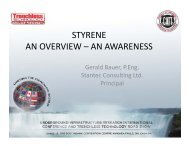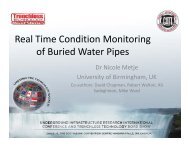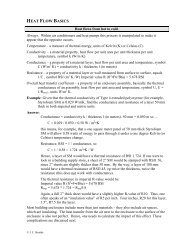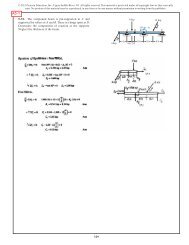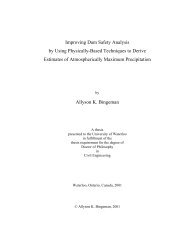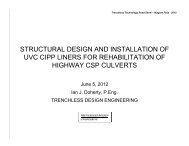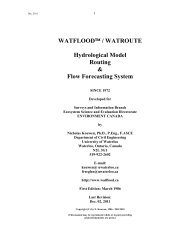Planning Horizontal Directional Drilling for Pipeline Construction
Planning Horizontal Directional Drilling for Pipeline Construction
Planning Horizontal Directional Drilling for Pipeline Construction
Create successful ePaper yourself
Turn your PDF publications into a flip-book with our unique Google optimized e-Paper software.
• the presence of active, inactive and potential landslide features, and other<br />
geotechnical “problem” areas, which should be avoided by the design drill<br />
path.<br />
All potential drill paths should be designed to pass outside of the No Drill Zone.<br />
While the No Drill Zone is typically defined in terms of geotechnical<br />
considerations, it may also be influenced by environmental and socio-economic<br />
concerns, such as wildlife concerns, rare plant occurrences, social resources (e.g.,<br />
land use) and cultural resources (e.g., archaeological sites), etc. Specific studies<br />
may be necessary to identify the presence of these environmental and cultural<br />
features. Relocation of the entry and/or exit point, thereby altering the length of<br />
the design drill path, may provide a means of mitigating some of these nongeotechnical<br />
concerns.<br />
3.4.4 Water Source<br />
The availability of a water supply to the HDD site should also be considered<br />
during the planning stage of the project. Water will be required <strong>for</strong> the following:<br />
• initial drilling fluid make-up;<br />
• additional drilling fluid as the drill progresses;<br />
• replacement fluid <strong>for</strong> drilling fluid escaping into the <strong>for</strong>mation due to seepage<br />
or hydraulic fracture; and<br />
• pretesting, where warranted, of the pipe string.<br />
Hydraulic fractures can greatly increase the water requirements during an HDD<br />
project.<br />
Water can be pumped from a water body to the drill site or hauled to storage tanks<br />
onsite. Factors to be considered in selecting a water supply are:<br />
• access to the water body;<br />
• flow restrictions;<br />
• regulator approval;<br />
• construction schedule (i.e., air temperature, anticipated streamflow/volume<br />
and water quality); and<br />
• physical limitations such as the distance and/or elevation of the entry point<br />
from the water body.<br />
September 2004 <strong>Planning</strong> <strong>Horizontal</strong> <strong>Directional</strong> <strong>Drilling</strong> <strong>for</strong> <strong>Pipeline</strong> <strong>Construction</strong> Page 3-4



